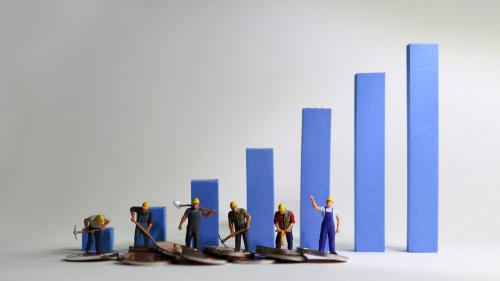Introduction
The global financial crisis has seen the largest and sharpest drop in global economic activity of the modern era. In 2009, most major developed economies find themselves in a deep recession. The fallout for global trade, both for volumes and the pattern of trade has been dramatic. The OECD predicts world trade volumes could shrink by 13 percent in 2009 from 2008 levels.
In his review of the global banking crisis, Lord Turner said, “what is unique about this crisis is that severe financial problems have emerged simultaneously in many different countries, and that its economic impact is being felt throughout the world as a result of increased interconnectedness of the global economy”. To understand the quantitative effects of the global financial crisis, a model that incorporates the interconnectedness within and between economies and the linkages between real and financial effects needs to be specified. To do this, a dynamic, intertemporal general equilibrium model that fully integrates the financial and real sectors of the economy is used in this paper to unravel and understand the mechanisms at work. The model incorporates wealth effects, expectations and financial markets for bonds, equities and foreign exchange as well as trade and financial flows. It is a suitable tool to analyse the impact of the crisis and policy responses on global trade and financial flows.
Modelling the global financial crisis has several elements to it. One is the bursting of the housing bubble, particularly in the United States and the primary source of problems at Lehman Brothers which collapsed in September 2008. This was accompanied by changing perceptions of risk by households and by business. Then, monetary and fiscal policies were deployed to offset the decline in activity and keep the financial sector afloat. The downturn in activity is also causing unemployment to rise sharply and, with it, a political response to protect domestic industries through various combinations of domestic subsidies and border protection, although, so far, the effect in aggregate has been small.
One of the main shocks to represent the crisis is the changed perceptions of risk. The collapse of Lehman Brothers sent a wave of fear around world financial markets. Banks virtually stopped lending to each other. The risk premium on interbank borrowing rose sharply to 5 per cent, whereas typically it was close to zero. Although authorities scrambled to inject liquidity into financial markets, the damage was done. The risk premium on corporate bonds shot up even more to over 6 per cent. Large CAPEX projects were shelved, the corporate sector virtually stopped borrowing, trade credit was hard to get and, with falling demand, particularly for investment goods and manufacturing durables like cars, trade volumes collapsed. Since then, risk premia have returned to more normal levels, although remain elevated.
In a previous paper the differences between a sharp rise in global risk that was permanent versus one that is expected to be temporary was explored. The difference was seen to depend on the role of expectations in a dynamic model. Once “time” is formally included in a dynamic economy-wide model, expectations have to be incorporated. Agents are forward looking and that affects behaviour. How expectations are incorporated in the model is spelt out later, but the problem with a temporary shock to risk premia is that businesses know that risk premia are going to come down and behave accordingly. But, as seen in McKibbin and Stoeckel, a temporary shock to risk premia, as seems to have happened in hindsight, does not generate the large observed real effects. The question is then, what would happen if business and households initially assumed the worst, that is a long lasting permanent rise in risk premia, but unexpectedly revised their views on risk to that of a temporary scenario one year later whereby things are expected to return to “normal”?
The objective of this paper is to examine the above question. That is, what are the economic effects of a global financial crisis where businesses and households unexpectedly switch between a pessimistic view on risk and then to a more moderate temporary scenario. The paper is organized as follows. In the next section, the main features of the G-Cubed model that is used in this analysis are described briefly as the model is documented in full elsewhere.
In section 3, the simulations to represent the financial crisis are described and the justification for the size of the shocks chosen. It turns out five shocks are needed: three for the crisis itself and two for the subsequent policy responses which covers monetary and fiscal stimulus.
In section 4, the impact of the crisis, as if it happened in the United States alone in modeled to unpick the mechanisms at work and demonstrate the importance of Lord Turner’s remarks on the interconnectedness of economies.
To do this we explore the impact of whether the shock to risk premia is a permanent one, a temporary one or one that is assumed to be permanent but after one year switches back unexpectedly to a temporary scenario. Changing expectations after one year of adjustment leads to different results than the case in which the temporary scenario was always believed to be the most likely outcome because investment decisions are already locked in to the permanent scenario in the first year of the shock.
In section 5 we explore the enormity of the policy response, particularly the extra fiscal response which is in addition to the endogenous response already in the model. It matters a great deal for the subsequent adjustment in the global economy whether the fiscal response is combined with the permanent scenario or the temporary scenario.
Finally, in section 6, some of the main insights are highlighted and discussed.
The Brookings Institution is committed to quality, independence, and impact.
We are supported by a diverse array of funders. In line with our values and policies, each Brookings publication represents the sole views of its author(s).



